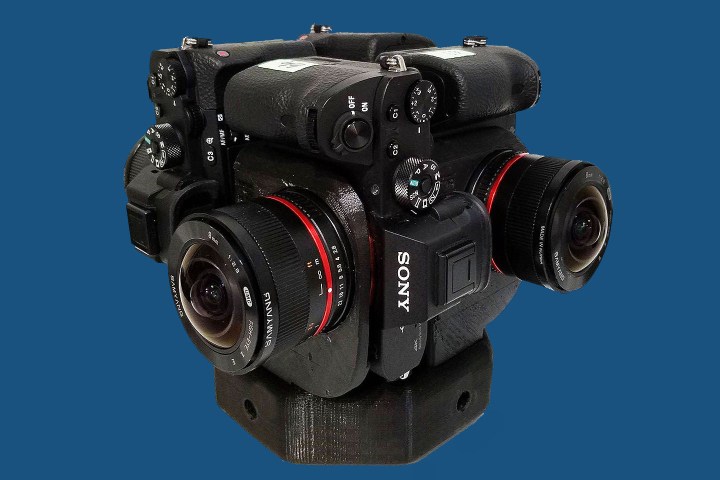
The Sony a7S II is designed with low light in mind — while the a7R II is about high resolution and the a7 II sits at a more affordable price point. The patent-pending Sumo360 mount allows photographers to use four of those a7S II’s with wide-angle lenses to shoot 6K 360 video.
The mount places four cameras in the portrait orientation together to capture a full 360 view. Unlike all-in-one consumer 360 solutions, the Sumo360 rig still needs stitching to mix the data from the four different cameras together — Summo uses the video stitching in AutoPano Video Pro 2.5.0.
Of course, users will also need their own 3D printer — and the materials — to assemble the mount. Sumo recommends using ABS for durability, though PLA, carbon fiber and even wood are possibilities, each with a few different benefits to using the material. The company also shared recommended printer settings for using the template.
Sumo is selling its template for $359. With the camera costing about $3,000, and a lens about $300 (Sumo used a Samyang 8mm) — and four of them required, the camera gear and template alone will cost over $16,000, not including a 3D printer, materials, or stitching software. Still, the potential to achieve a 6,000-pixel resolution in limited light could be enticing for a few. Sumo says other 360 rigs with similar high-resolution and low-light capabilities are even pricier — like the $45,000 Ozo — or difficult to find.
Sumo also rents out its 3D-printed mount — with the camera, lenses, and a tripod included — but only in western Los Angeles and Mexico City.
Editors' Recommendations
- 3D printed cheesecake? Inside the culinary quest to make a Star Trek food replicator
- AMD’s revolutionary 3D V-Cache chip could launch very soon
- Fighting football injuries with 3D-printed, hyper-personalized pads
- NASA is testing a 3D printer that uses moon dust to print in space
- The best 3D printers under $500




